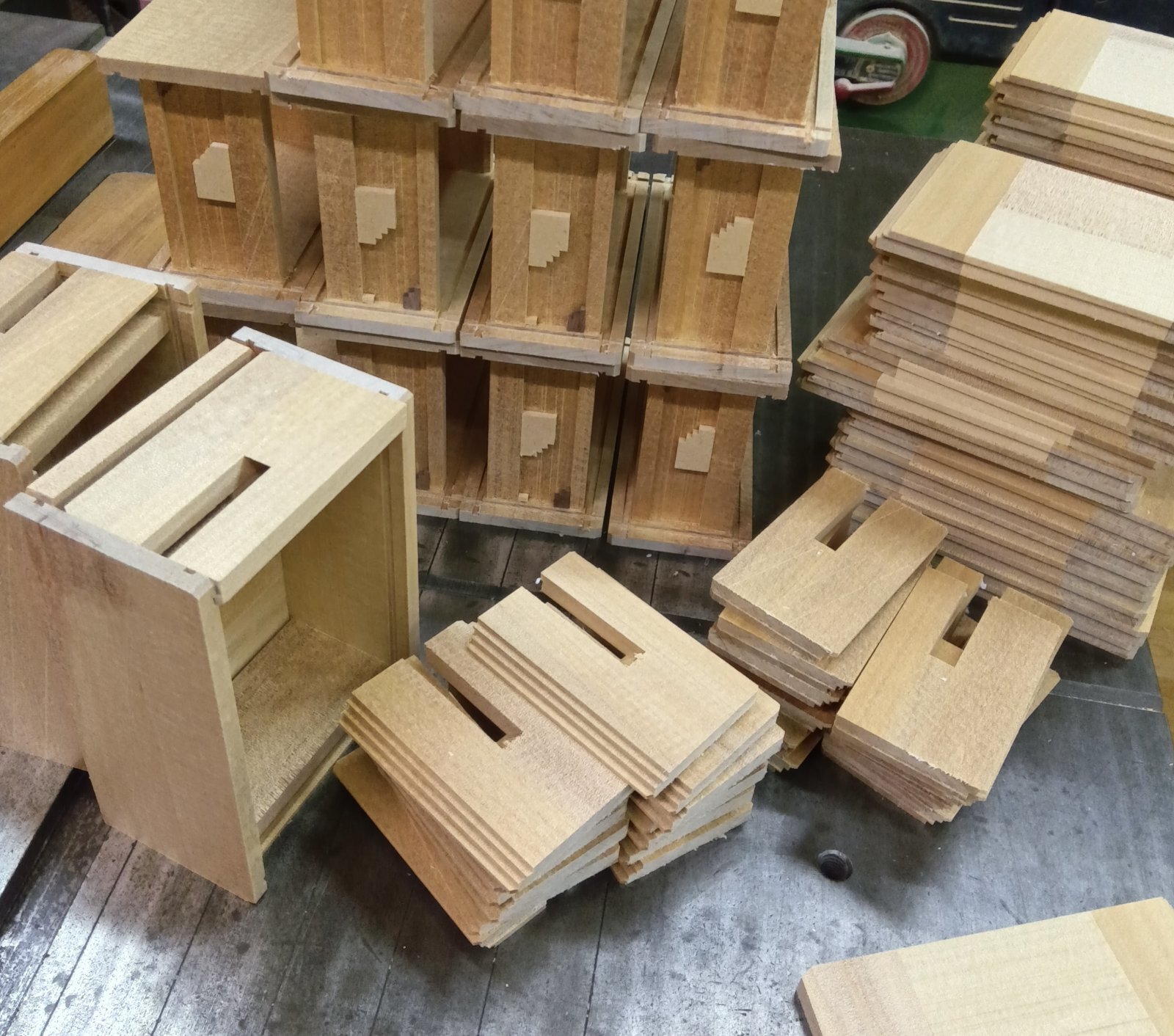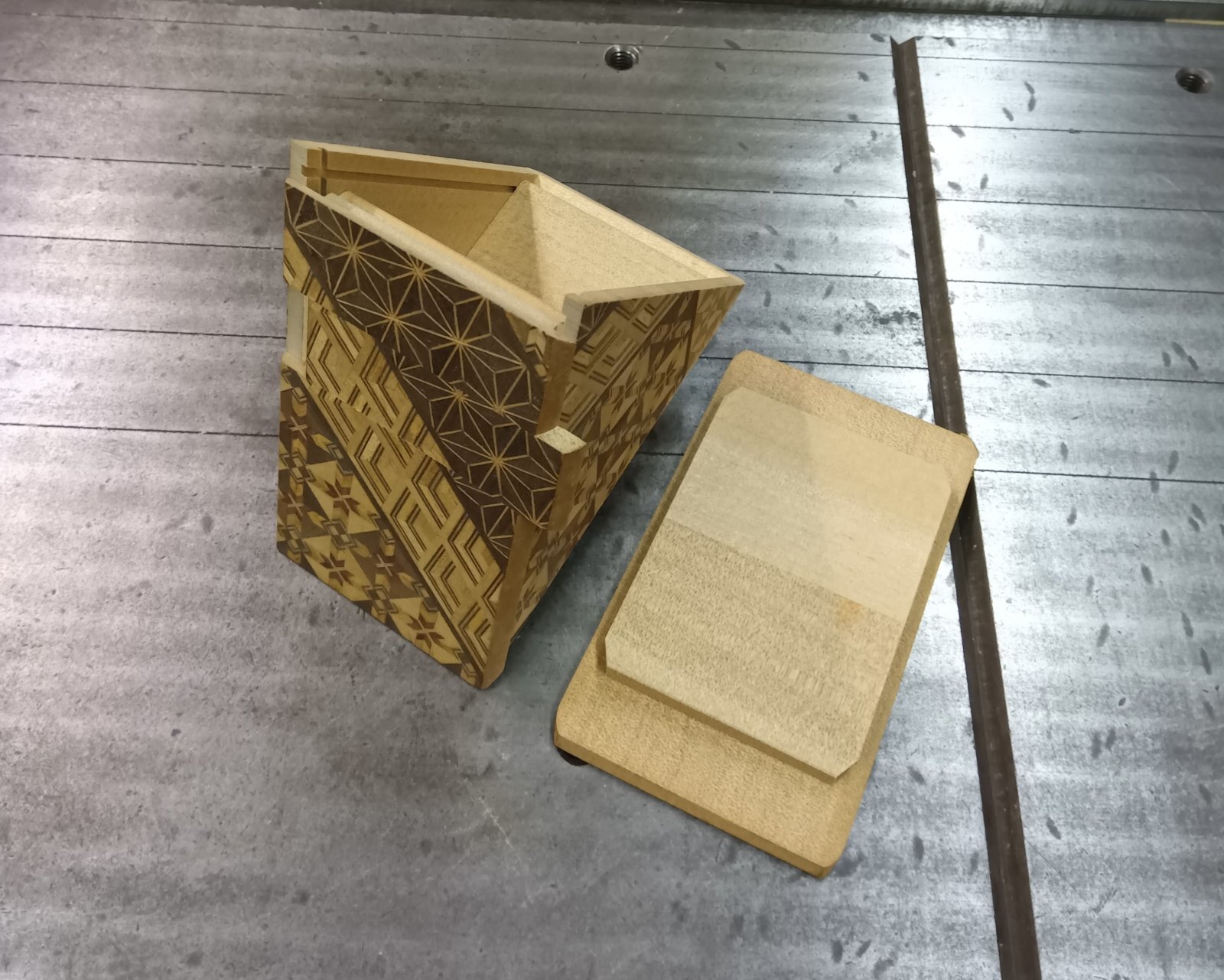5 sun 27 steps box (3)
Today, I continued working on the 5-sun 27-step Japanese puzzle box, as I did yesterday. Today’s tasks included creating and assembling the Aruki (moving panel) panels (photo). The wood grain on the material I selected this time was a bit challenging to work with, so it took some extra effort, but I made sure everything moves smoothly as usual.
This Agathis wood, like many types of wood, contains hard areas known as "Ate" (as we call it in Japanese), which require careful attention during production. I’m not sure what the exact English term is for ate, but in Japanese woodworking, it refers to sections where the wood has hardened or become misshapen. With Agathis, these areas become particularly dense. While it would be wasteful to discard them, I carefully select and use these parts strategically. Often, I incorporate sections with ate into the axis of the puzzle box; however, if it extends too far, parts may end up in the aruki panels as well. Ideally, I prefer softer wood for aruki panels, but since the wood is scarce, I make adjustments to work with these harder areas when necessary.
During this assembly process, I carefully adjust each box to ensure that all four aruki panels smoothly. Once the exterior yosegi paneling is attached, the smoothness or tightness of the mechanism often changes, so I anticipate this and account for it in my adjustments. After the yosegi panels are applied, I will fine-tune the mechanism’s movement once more.
In parallel with this project, I’ll soon begin preparing to make the 7-step Triangle shape puzzle box. The photo shows a sample of this box. Normally, I don’t keep samples, but this particular box is unique, so I have one for reference. It’s an older piece, and I accidentally chipped a corner when I first attempted this design. Since I’ve made other puzzle boxes many times, and their mechanisms are all similarly structured (even if the move count varies), I don’t require samples for them. However, because this triangular box has a different design and I only make it occasionally, I rely on this sample each time I produce one. This time, I’ll be increasing the box size slightly as per the request from the Hakone shop. Although it may not be clear in the photo, this box has a distinctive 7-step mechanism with a “kannuki”(slide key), unlike my usual hexagonal boxes, which use only sliding panels. I’ll start as usual by applying the yosegi sheet to the board.
This Agathis wood, like many types of wood, contains hard areas known as "Ate" (as we call it in Japanese), which require careful attention during production. I’m not sure what the exact English term is for ate, but in Japanese woodworking, it refers to sections where the wood has hardened or become misshapen. With Agathis, these areas become particularly dense. While it would be wasteful to discard them, I carefully select and use these parts strategically. Often, I incorporate sections with ate into the axis of the puzzle box; however, if it extends too far, parts may end up in the aruki panels as well. Ideally, I prefer softer wood for aruki panels, but since the wood is scarce, I make adjustments to work with these harder areas when necessary.
During this assembly process, I carefully adjust each box to ensure that all four aruki panels smoothly. Once the exterior yosegi paneling is attached, the smoothness or tightness of the mechanism often changes, so I anticipate this and account for it in my adjustments. After the yosegi panels are applied, I will fine-tune the mechanism’s movement once more.
In parallel with this project, I’ll soon begin preparing to make the 7-step Triangle shape puzzle box. The photo shows a sample of this box. Normally, I don’t keep samples, but this particular box is unique, so I have one for reference. It’s an older piece, and I accidentally chipped a corner when I first attempted this design. Since I’ve made other puzzle boxes many times, and their mechanisms are all similarly structured (even if the move count varies), I don’t require samples for them. However, because this triangular box has a different design and I only make it occasionally, I rely on this sample each time I produce one. This time, I’ll be increasing the box size slightly as per the request from the Hakone shop. Although it may not be clear in the photo, this box has a distinctive 7-step mechanism with a “kannuki”(slide key), unlike my usual hexagonal boxes, which use only sliding panels. I’ll start as usual by applying the yosegi sheet to the board.

